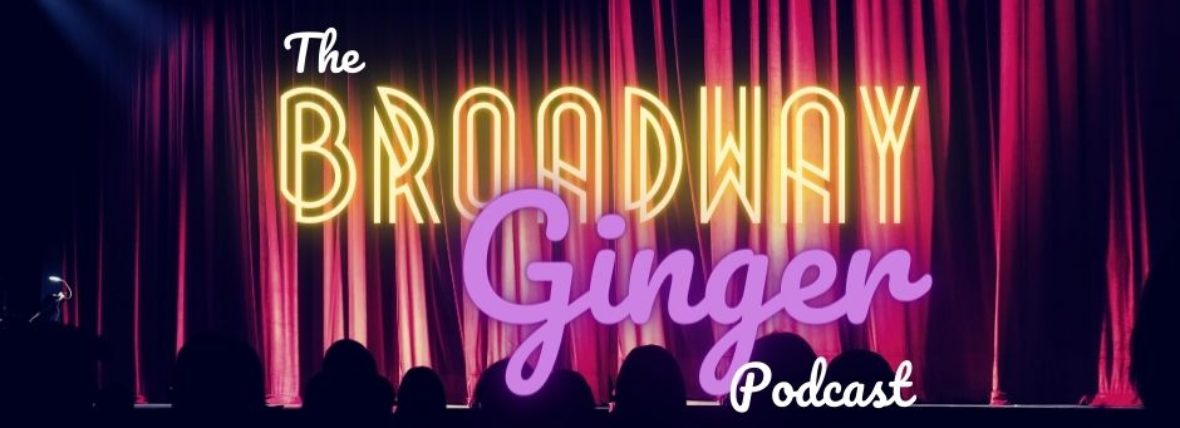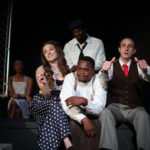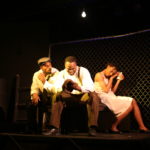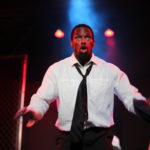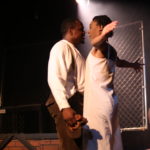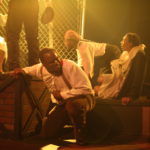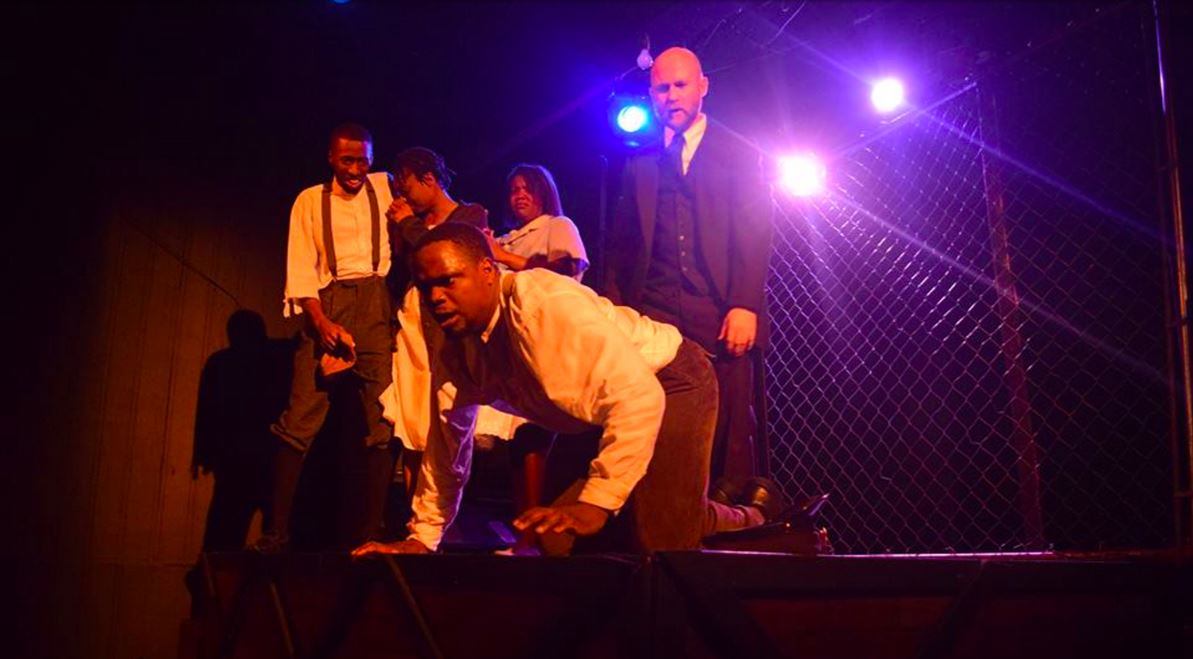 A hazy stage, so smoke-filled one can hardly see through it. Just before the play begins, it clears to reveal two platforms and chain-link fences in the background. An African-American man enters frantically with clothes in hand, pulling on his pants and shirt as he addresses the audience. Other characters vocally supply eerie sound-effects on their gradual entrances. Thus begins NATIVE SON at Marietta’s New Theatre in the Square. Its fragmented nature throws the audience into the middle of the story, a perfect prelude to a frantically-structured narrative.
A hazy stage, so smoke-filled one can hardly see through it. Just before the play begins, it clears to reveal two platforms and chain-link fences in the background. An African-American man enters frantically with clothes in hand, pulling on his pants and shirt as he addresses the audience. Other characters vocally supply eerie sound-effects on their gradual entrances. Thus begins NATIVE SON at Marietta’s New Theatre in the Square. Its fragmented nature throws the audience into the middle of the story, a perfect prelude to a frantically-structured narrative.
Bigger- yes that’s his name- chauffeurs for a white family, but when he brings home the oldest daughter Mary (Shay Alexi) very drunk and tries to keep her silent as her blind mother hears them arrive late at night, he accidentally smothers the girl to death. And no, that’s not a spoiler, as this all transpires in the first ten minutes.
The play follows the story of Bigger (Dee Jordan) almost entirely non-sequentially, as the audience sees his choices interrupted by the voice in his head, another character altogether (known as “Black Rat,” which you’d only know with a labeled production shot in hand). Black Rat (Rahshaun Cormier) functions at first as the voice of reason- or foolishness- but as the play progresses, both he and the real Bigger alternately live Bigger’s life. One moment, Bigger is speaking to the private investigator, the next it’s his alter-ego doing the interacting as Bigger supplies the voice.
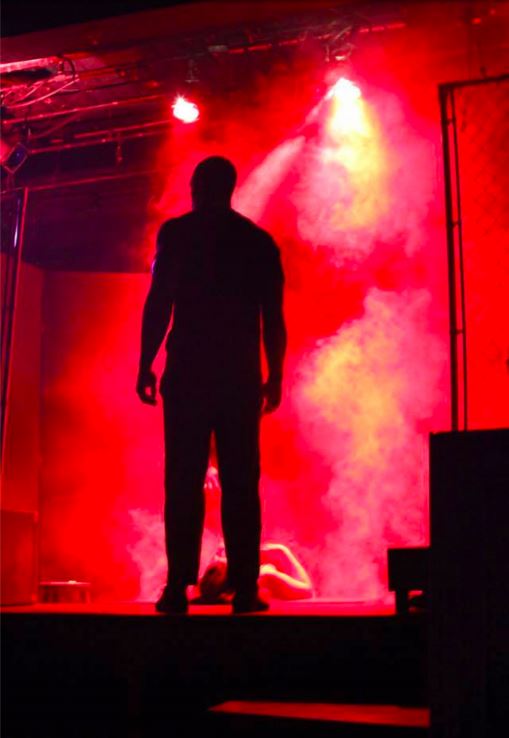 The experience is exhausting in the best way. The jumpy, though not impossible to follow, style mirrors Bigger’s perpetually conflicted mental state. As such, this allows the audience to ride along with him and truly sympathize with his plight. Under the powerful direction of Emil Thomas, the piece exemplifies how a theatrical style alone can convey the emotions of the central character. From the moment it starts, we’re all in and without an intermission, don’t get a reprieve until the very end.
The experience is exhausting in the best way. The jumpy, though not impossible to follow, style mirrors Bigger’s perpetually conflicted mental state. As such, this allows the audience to ride along with him and truly sympathize with his plight. Under the powerful direction of Emil Thomas, the piece exemplifies how a theatrical style alone can convey the emotions of the central character. From the moment it starts, we’re all in and without an intermission, don’t get a reprieve until the very end.
With no microphones in sight, a bare bones set, and few- if any- recorded sound effects, this unplugged atmosphere refreshingly emphasizes Nambi E. Kelley’s rich text, allowing it alone to tell the story. This script choice suits the Emil Theatre’s small space well, and the subject matter rings relevant in a time when race relations continue to dominate social media discussions. Its fast pace is accentuated by an equally fast-paced and poignant lighting design by Stephen Reilly, to whom I’d give star billing. Why do Bigger and Black Rat strip down in the final sequence? I couldn’t tell ya. I also couldn’t tell ya what those last few lines were.
Follow @BwayGinger for more Atlanta theatre news, reviews, and snarky opinions. And then let’s be best friends and talk about how much we love Aaron Tveit.
